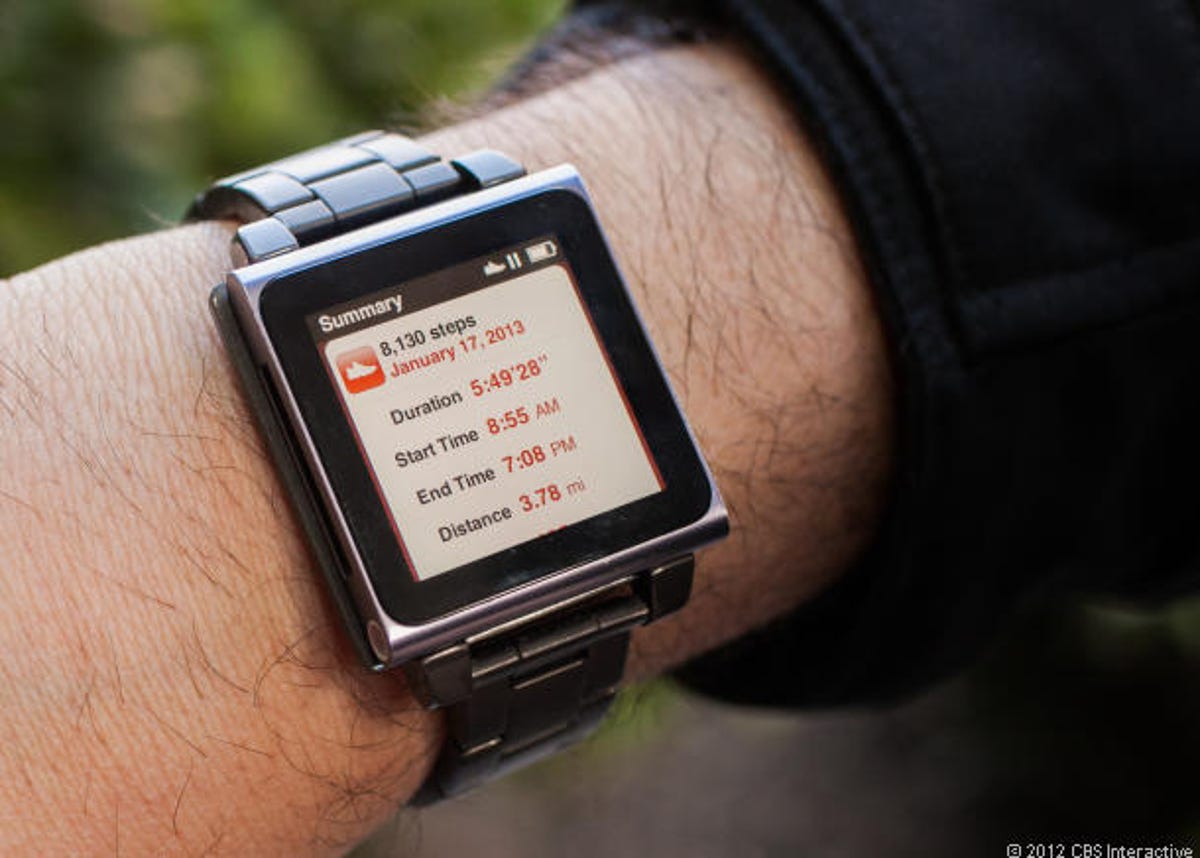
Todd Hamilton
When Apple releases its iWatch — or whatever it’s called — it seems like a pretty safe bet that it’ll be heavily focused on health and fitness. That’s what recent reports suggest, and that’s what Tim Cook wearing a Nike+ FuelBand wherever he goes would portend. But no matter how big health might be for the iWatch, it can’t be everything. There has to be more.
There’s no iWatch yet, but we’re expecting one. Apple’s entry into a much-discussed but still embryonic wearable-tech market could address a lot of shortcomings of products we’ve already seen. It could also legitimize wearable tech in general. But an iWatch needs to do something else, too: be excellent at doing at least several things.
Why? Because wearable tech isn’t just about health. And neither is Apple. And the iWatch, as far as we imagine such a product, is set up to be a lot more. Not a huge amount more, but more in a few key, defining areas.
This is what I think the iWatch could strive to be. Again, most importantly, it needs to be more than just one thing. Health might be the killer app, but I think there has to be more up Apple’s sleeve.
Be the next wave of health device
Most fitness devices, currently, are just smart pedometers. Some do sleep tracking via accelerometer. Other fitness bands are folding in compact heart-rate monitoring, and with it some pulse- and blood-monitoring functions. Apple’s band could have some other new innovation, but the key — according to a 9to5Mac report — is being a hub for health services and connected devices. An iOS 8 Healthbook app makes a ton of sense, obviously; each fitness band I’ve seen is in its own weird ecosystem, none of them sharing their collected data much despite it all being, essentially, very similar. Apple could tie together the loose ends. Also, Apple could have the iWatch pair and work with MFi health devices like blood pressure cuffs, glucose monitors, and other medical accessories. Hospitals and clinics could interface with the iWatch. The iWatch and Healthbook could be a bridge to medical tech, and a needed hub for a messy landscape.
But, as important as this idea could be, it’ll take time to be incorporated into the technologically slow-moving world of hospitals and medical offices. And, honestly, being a “superior health device” isn’t a world-class pitch for the ultimate sexy gadget. Other things are needed, like:


Sarah Tew/CNET
Be a better iPod (seriously)
The role of the iPod has approached irrelevancy to many, but let’s not forget that small iPods have been essential workout devices for a good handful of people. That is the role of the Shuffle, and even of the Nano: easily carried, and even connected with Nike fitness services. There’s still a role for a music-playing workout gadget — maybe one that’s more of an extremely smart remote than a pure storage device, but being able to go running and play radio or your favorite tunes matters more than some might think. An iPhone can fill that role, but an iWatch could be a better remote for what you need to access quickly. Apple hasn’t had a new iPod since 2012 (unless you count the camera-free iPod Touch refresh of 2013) and maybe that’s because…the iWatch is that device.
Be ultraconnected to the world beyond your phone
Tim Cook mentioned a “sensor explosion” coming on the horizon, but that hopefully applies to the world beyond your self. The smart home, the Internet of things, and the spread of short-range location-based services like iBeacon: all of these fronts offer up ways to ping something like an iWatch when you’re out somewhere and offer information about where you are and what you can do when you get there, or even proactively provide ways of offering information you need (a boarding pass if you’re at the airport, for instance). If an iWatch could help make sure your door is locked or your oven isn’t on, help adjust the temperature in your kid’s bedroom, or act as a baby monitor — all from your wrist — I’d be interested.
An iWatch with the look of a fitness band (pictures)






Be modular
Will it really just be a wrist device? I enjoyed popping the iPod Nano on and off my wristband as needed. Wristbands, from all the examples I’ve seen, have drawbacks: they collect sweat, they need adjusting, they can break. And, there are always some people who won’t be best served by an armband. I still have a feeling that the “iWatch” will actually be a more flexible device, in terms of where it’s worn, than anyone has reported yet.
Be fun
This actually matters. I haven’t seen a mass-market Apple device that hasn’t striven for general ease of use and appeal. Fitness trackers and smartwatches like the Pebble Steel just aren’t mass-market-friendly yet. The iWatch needs to make sense, and be enjoyable to use for everyone, in a way no others really have been. I’d fold having a long battery life, or an easily charged battery, into this equation: whether it’s wireless charging, an extra-long battery, or some other innovation, there’s no way it makes sense to have this to be another wire-charging device that only lasts a couple of days.



